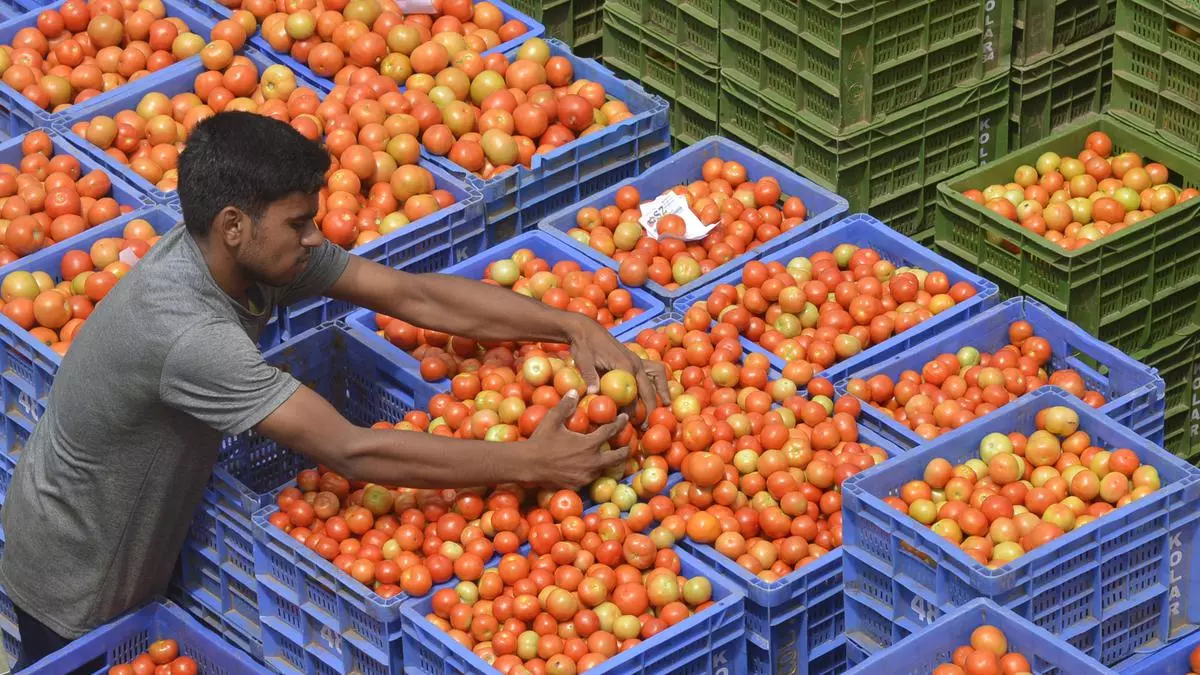Tomato prices expected to drop to ₹30/kg level by mid-August
Tomato prices, which started to decline after the center’s intervention, may see the trend continue until mid-August before prices stabilize around $30/kg, according to experts. However, the current price spiral leaves many questions unanswered such as whether such anomalies should be accepted as normal amid the threat of climate change or some plans are put in place to prevent such an abnormal rise.
First, one has to see why prices are rising so rapidly and analyze the effectiveness of the TOP scheme in addressing such a situation. Whatever corrective steps are required, said the former Horticultural Commissioner, they must be taken including the transfer of the scheme to the Department for Consumer Affairs from the Department for Food Processing.
Solution
On the other hand, Varun Khurana, founder and CEO of B2C agricultural product delivery platform Otipy, said, “To avoid such situations, controlled cultivation in greenhouses and other covered areas can be explored to reduce reliance on open farming.” Khurana also said that open farming will always be vulnerable to the effects of heavy rains, especially during the monsoon season. “Identifying alternative agroclimatic zones for growing tomatoes can also enhance resilience and reduce the risk of supply disruptions during heavy rainfall events,” Khurana said.
Participating in the price analysis conducted by Otipy, he further said that the current downtrend is expected to continue, and prices may stabilize by mid-August. “Prices are expected to stabilize at a range of around Rs 30/kg,” Khurana said.
Sharing the same outlook, PK Gupta, director of the National Horticultural Research and Development Foundation (NHRDF), said prices could drop to the $50/kg level in the next 10 days before finally returning to normal. He suggested a long-term plan to popularize the use of tomato puree to supplement off-season demand, since the shelf life is a maximum of 20 days in the refrigerator and it is not economically feasible to use controlled atmosphere (CA) cold storage, in which apples are kept.
“With the monsoon stabilizing and market access improving, vegetable prices are likely to stabilize and decline slowly as we enter the August-September window,” said Tushar Trivedi, Head of Agribusiness, nuture.farm.
There is an urgent need to research tomato varieties for pests, diseases and extreme weather conditions. Besides, we need to teach farmers smart farming to deal with such issues,” said Shailendra Singh, Managing Director and Founder of Creduce.
-
Also read: Spillover Effects From Higher Tomato Prices To Other Commodity Prices Of Major Concern: RBI Bulletin
Experts said recent large-scale rainfall across India, including simultaneous rains in Delhi and Mumbai two weeks ago, has had an impact on the tomato-growing areas of Mumbai and Kolar, Karnataka. Even tomato supplies in northern India were disrupted by landslides caused by floods in Himachal Pradesh and Uttarakhand which contributed greatly to the price hike in Delhi, the highest among the major consumption centres.
According to Otipy data, the price of tomatoes (hybrid) in Delhi averaged ₹ 75/kg between 14 June and 14 July as against ₹ 69/kg in the last year period. Prices rose rapidly after June 20, coinciding with the impact of heavy rains on tomato cultivation.
Data from the Ministry of Consumer Affairs shows that the retail price of tomatoes in Delhi started from $20/kg on June 14 to reach a peak of $178/kg on July 14 before starting to decline from July 17. Currently, it hovers around 120 rubles / kg, the Ministry’s data shows, while two cooperatives are currently selling tomatoes at $ 70 / kg on a government initiative.
Ministry data also shows that tomatoes reached a peak of ₹62/kg in Delhi during the first week of July 2022 and then started to decline thereafter. However, though prices were between ₹30 and ₹40 in August, they again started moving in September and October reaching a peak of ₹67 on 25 October 2022, which experts said was due to heavy rains coupled with festival demand.
“The increase in vegetable prices in the past two months is due to unseasonal rains, crop failure and challenges faced by farmers in the supply chain,” Trivedi said.
Singh said that promoting climate-friendly agriculture should greatly help ensure food safety and security.
